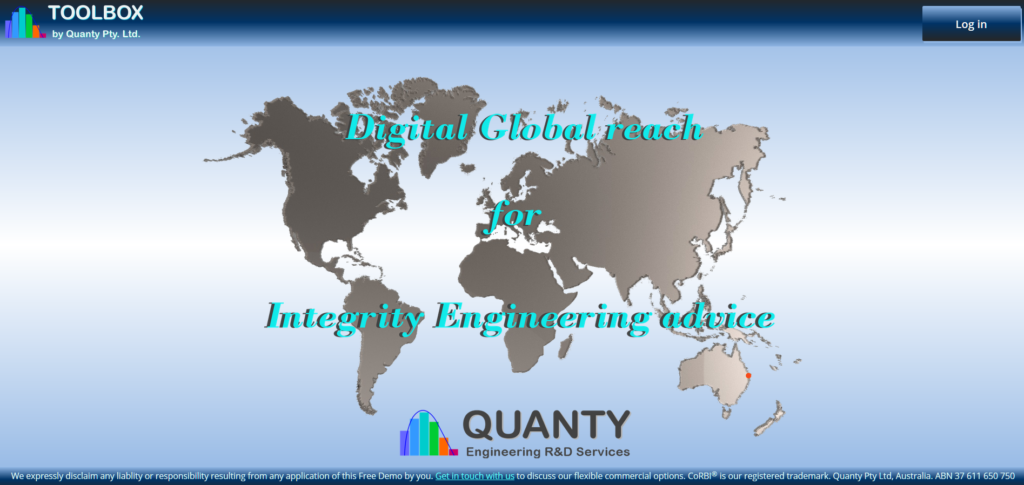Caring after plant integrity is a busy and stressful work. Human psychology is such that defending the current environment is confused with staying in a comfort zone. Albeit this zone may not be comfortable at all (same outcomes from same contractors, same burden of responsibility and document management, same questionable risk management confidence). If you wish to change this routine environment, consider the holistic improvement of integrity tasks:

1. Know your Risk Cost and Safety Implications
Likely, one thing in the back of your mind might be: ‘How confident are we about what we do for the equipment integrity and safety’? – an obsessive question.
Consider all those people going on site and doing the hard work there. And also – all the resources being spend over a facility life. Looking at client and contractor side efforts for risk based integrity management, shouldn’t that be better substantiated by safety and money figures?
Simply imagine a decision making process based on risk costs, limited by the field personnel safety exposure tolerance. An additional benefit would be a more relaxed interaction with financial teams, thanks to a fully justified cost/benefit analysis for budgets allocation. Is this just a dream? Not anymore.
While we see a trend of marketing just any credible means for non-analyzing equipment failure probabilities (PoF), the above perspective becomes true only when predicting these PoFs. The true PoFs of individual equipment. This is a new RBI, and even more than that – an overall confidence step change.
Is that ever feasible on a budget? – Yes, we developed the CoRBI® method to make it feasible. Case studies showed the application readiness, and as a matter of secret, we obtained very sensible results without any fetch factors. That tells us – we created a new generation integrity management tool. It is waiting for you.
2. Nail the integrity inspections: planning and performance
There are so many instances of challenging UT gauge versus phased array or TOFD-based NDT techniques from the practicality standpoint. In essence, that is arguing basic tools versus advanced ones. Same applies to the inspection coverage, always opposed by the costs and inspection timing. There is something like we have achieved a consensus for now (basics preferred), but it might be a wrong one. We need transparent criteria for the tools selection.

Now, few words to our inspection friends: While you may think that we challenge your business opportunities of applying advanced NDT tools, we might be your only sound helpers in continuing this useful business. As the consensus is playing against you, but we may sisagree with that consensus. We have the answers.
Specifically, we are not biased towards the inspection contractor or client side. What we mean under ‘nailing’ is quantifying the inspection data, that is analysis the data statistically to see whether it has been representative. In turn, such analysis substantiates NDT tools and inspection coverage upgrades, where relevant. And doesn’t substantiate them where irrelevant.
In this way, the inspection planning solution provides a justified choice for the risk management loop inspect-assess-reinspect-reassess. Voluntarism becomes minimized.
3. Make the data exchange serve you, not the other way
Commercial RBI software sometimes does it other way. Being hard-coded to a specific RBI methodology, it makes you follow that very methodology. Trespassing is strongly discouraged. But what about flexibility of RBI assessments? That flexibility you require to address on-going (mostly – budget driven) constraints. As there are no such things like identical shutdowns, right?
Besides of this, paying a big money for a software package, how do you argument changing that software afterwards? This is one of the devices which may fence you within a false ‘comfort zone’, within same problems and frankly not-too-perfect solutions ever repeating.
Our solution is heretically simple: the Inspection Data Management Software (IDMS) should support any assessment methodology. Just any, not even an RBI methodology maybe. Flexibility of what we can do with the data – this is what engineers are after. Store it, but don’t fence it.

But how to achieve that? Can we program all credible engineering methods? – No way. An IDMS is for data storage, exchange, visualization and reporting. One necessary addition to it is a human brain – that very computer already suitable for solving a broad spectrum of engineering problems. Apply it.
And finally, we’ve made it – that flexible IDMS. Our AIM data® online application is up and running (jeez, it was hard). We use it for everything RBI. More on it in this post.
Way forward
Such are the three piles of our New Generation Asset Integrity offer. Not only corrosion inspections, but pretty much any kind of damage in any industry can be risk-assessed using this novel strategy. Our online portal is a gateway to these offers. We can exchange the data and do the analysis remotely. You only need two things: integrity data and internet connection for us to run a demo for you. If you want to join to see it working – write us few lines here.

Your drivers? That stress relief we promised.
Being ourselves,
Quanty Pty Ltd (Australia)